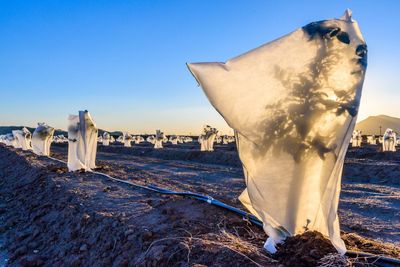What is Garden Fleece?
Horticultural or garden fleece is a sheet of material that can be used to cover plants. It is similar to plastic sheeting that is often used for similar purposes, but there are some significant differences. Limitations of plastic sheets include that they are heavy and difficult to manipulate and that they tend to overheat during the day and fail to insulate enough at night. Using horticultural fleece as an alternative to plastic has become more popular with gardeners. It is a synthetic material, made from polyester or polypropylene, and is more like a fabric than plastic. It is similar to fleece clothing, but is thinner and lighter. Garden fleece is lightweight, soft, and warm.
How to Use Garden Fleece
Potential horticultural fleece uses include protecting plants from a frost, insulating plants against cold temperatures through winter, protecting plants from wind and hail, protecting soil, and keeping pests away from plants. Fleece can be used outdoors, with containers on patios and balconies, or even in greenhouses. Using horticultural fleece is easy because it is very lightweight and you can cut it into any shape or size you need. Protecting plants from frost is one of the most common uses. For instance, you can use the fleece to cover plants in the early spring if you are expecting a late frost. You can also cover and protect your autumn crops, like tomatoes, when early frosts are possible. In some climates, fleece can be used to cover sensitive plants for the entire winter, allowing them to survive until spring. If you live in a windy climate, harsh winds can hinder the growth of some plants. Cover them with fleece on the windiest days. You can also cover plants during harsh weather that could damage them, like hail. When using horticultural fleece, just remember that it is extremely lightweight. This makes it easy to use, but it also means that you need to anchor it well. Use stakes or rocks to hold it down so your plants get adequate protection.
